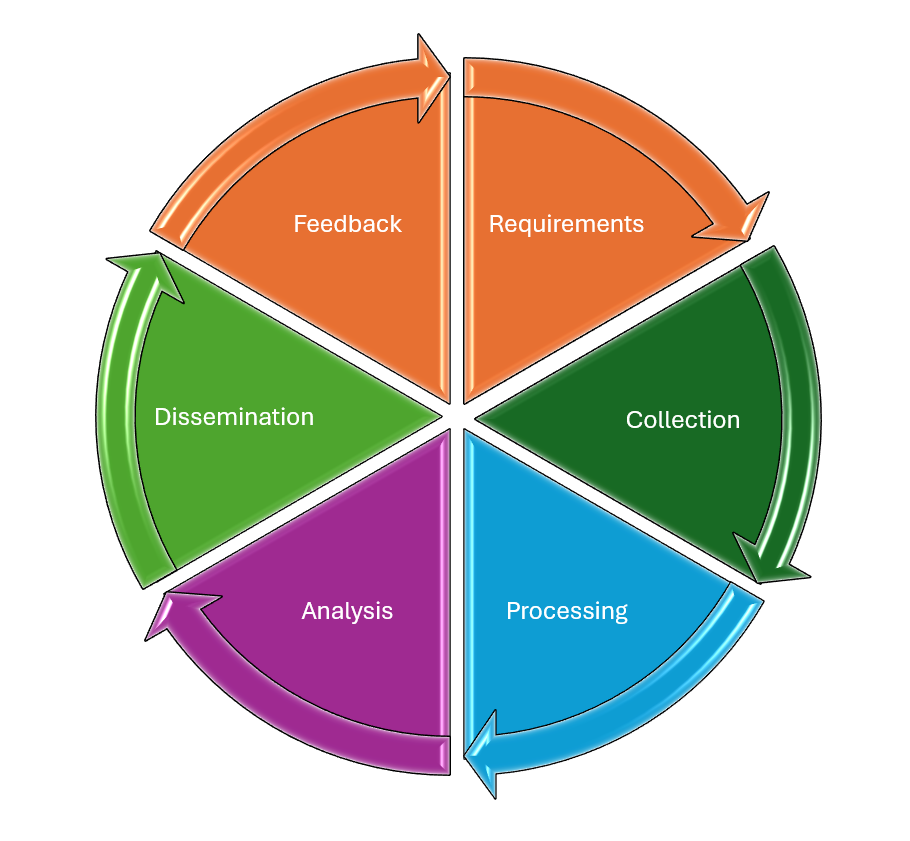
Security Intelligence Cycle: Analysis, dissemination, and feedback
The Security Intelligence Cycle is a systematic process used by organizations to collect, analyze, and act on information that helps identify and respond to security threats. It’s a continuous cycle that turns raw data into useful information. This information helps organizations spot potential security threats hidden in the vast amount of data created by their systems. The security intelligence cycle is a process that involves collecting, processing, and analyzing data to provide useful insights for decision-makers.
The cycle involves multiple steps, each building on the previous one, to ensure that security information is relevant, timely, and useful for decision-making.
1. Requirements (Planning and Direction)
2. Collection and Processing
3. Analysis
4. Dissemination,
5. Feedback
Let’s explore key steps in this cycle: analysis, dissemination, and feedback
After collecting and processing data(Please check my previous blog post for understanding), the next steps in the Security Intelligence Cycle are analysis, dissemination, and feedback. These steps help turn raw data into useful insights that can be shared with the right people in the organization.
3. Analysis: Making Sense of the Data
Once the data is collected and organized, the analysis phase begins. In this step, the data is studied to find patterns or unusual activities that could indicate security problems.
-
Challenges of Data Volume: Since many organizations collect a large amount of data, it can be difficult for humans to manually analyze everything. This is where automated tools, like artificial intelligence (AI) and machine learning (ML), come in handy to process and analyze the data faster.
-
Use Cases for Analysis: To get meaningful results, organizations create use cases—specific scenarios to guide the analysis. For example, a use case could be set up to detect irregular login attempts on a company’s system. These use cases help narrow down what to look for in the data and make the analysis more focused.
4. Dissemination: Sharing the Information
After the data is analyzed and insights are developed, the next step is dissemination. This is the process of sharing the information with people who need to act on it, such as incident response teams, IT staff, or company executives.
-
Different Audiences: The information needs to be shared in different ways depending on the audience. For example, a detailed report might be sent to security analysts, while a high-level summary is sent to executives.
-
Types of Intelligence:
-
Strategic Intelligence: Long-term information that helps plan projects or security policies.
-
Operational Intelligence: Information that helps managers and specialists with day-to-day security tasks.
-
Tactical Intelligence: Real-time information that helps staff respond to immediate security alerts.
-
5. Feedback: Improving the Process
The final step is feedback. After the intelligence is used, feedback is collected to improve the entire process for the future.
-
What to Review: Feedback might focus on what worked well and what didn’t. It’s important to review whether intelligence helped prevent or respond to incidents effectively.
-
Continuous Improvement: This step ensures the organization is always improving how it collects, analyzes, and shares security information. It also helps adapt to new threats and changes in regulations.
Conclusion
The analysis, dissemination, and feedback phases ensure that raw data is turned into actionable insights and shared with the right people. By reviewing what worked and continuously improving the process, organizations can stay ahead of potential security threats and respond more effectively.
Leave a Reply